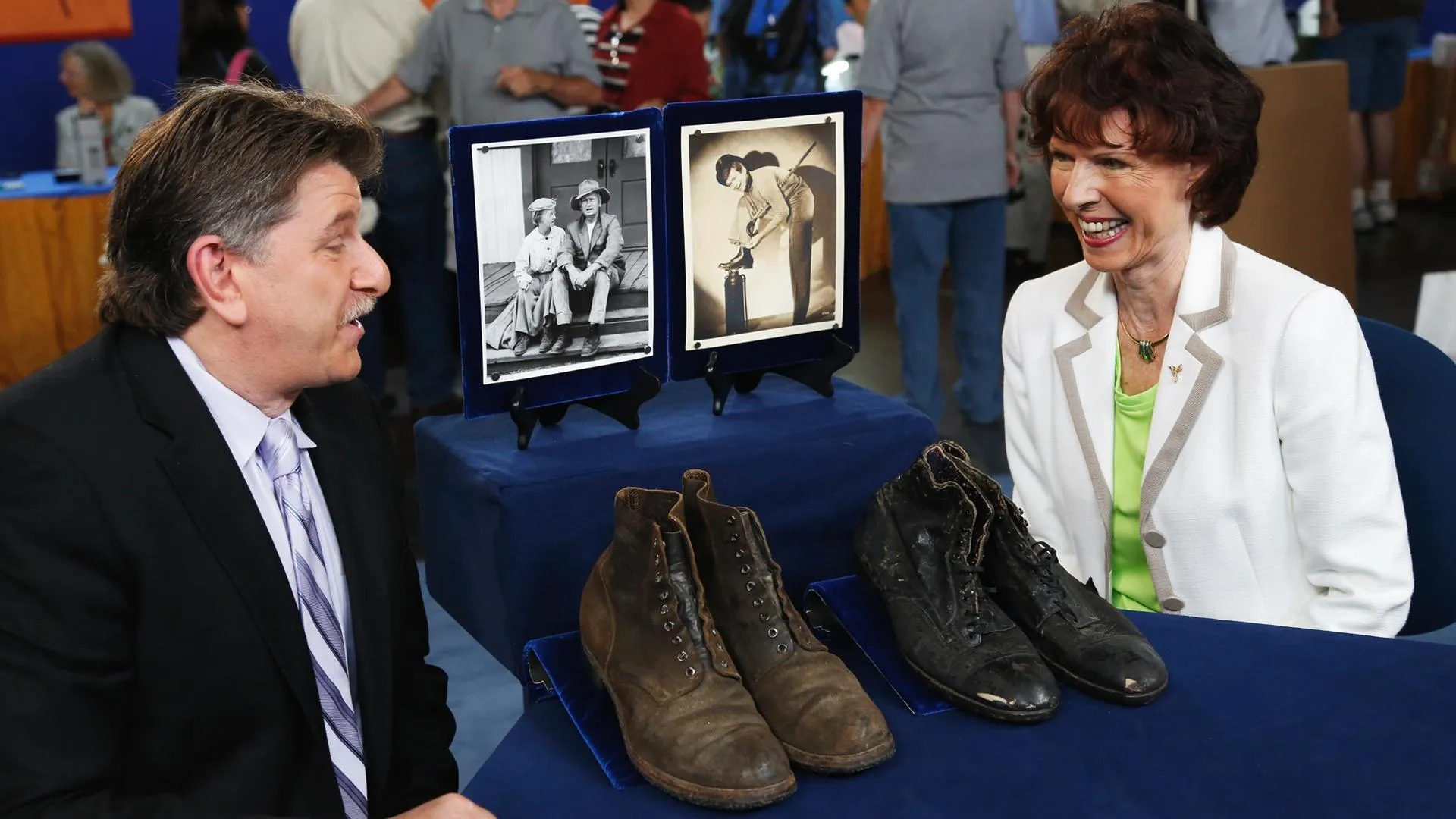GUEST: This is two original New Yorker covers. I inherited them about ten years ago when my uncle passed away. He was an artist in Chicago, and I found these online to match them to show that they are real. I've looked at the back of them and they have the stamps from The New Yorker that show that they are authentic and that they were printed.
APPRAISER: Do you know anything about the artist?
GUEST: William Steig I don't know too much about. He created Shrek, and that's the only thing I know about him.
APPRAISER: I think that's what most people know him for, creating Shrek, which is later in his career-- I think about 1990. He'd been writing children's books. He was born in Brooklyn, I think early 20th century around 1907 or so. And it's interesting, his parents were of Polish-Jewish descent. They were working class Socialists, and they basically instilled into their boys, "Don't become laborers because a businessman will be in control of you, and don't become a businessman because you'll be controlling laborers." So it's one of those rare instances where the parents actually encouraged the children to get involved in art. And that's what he did: he became a very successful cartoonist and writer. And we see one here, and we know when it dates from because here we see "1956." And this is pretty typical of his earlier work, where you would have the street smart, tough little kids-- quite worldly kids, by the looks of things-- looking at the young ladies there, I'm guessing maybe at Coney Island or something like that. So this is a fairly typical piece by him. And then who's this by?
GUEST: This is Mary Petty. This cover is from 1942, so it's right around the beginning of the war. She has her gas mask on.
APPRAISER: It took me a little while to work it out because you immediately think it's a bug of some sort. But it's a maid-servant and she's wearing her gas mask, but it makes her look like a strange sort of bug here. An interesting woman, perhaps not as well known as William Steig. She wasn't particularly well known around The New Yorker office. James Thurber, in fact, said, "Well, yeah, she was born "in a brownstone in the West End, "her dad was a professor, she had an unhappy childhood, brother," that's it. So nobody seemed to get to know her terribly well. But this is, again, a nice example of her. And she did quite a number of covers too. She predated Steig slightly. She sold her first cover I think in 1927 and did various ones, but often used characters from the Peabody family, which she created. So in terms of their value, it's a kind of cross discipline collecting area. We've got paintings, we've got... they're book illustrations-- I had a chat with the book people-- and also the collectibles table because people collect New Yorker covers. And I was told that for any New Yorker cover, an original artwork is around about $2,000 to $3,000.
GUEST: Okay.
APPRAISER: But William Steig's really quite well known, and so I'm going to say conservatively, $3,000 to $5,000.
GUEST: Oh, that's great.
APPRAISER: But possibly $4,000 to $6,000.
GUEST: Wow.
APPRAISER: I did check and I noticed that a lot of the works that have come up at auction carry quite big estimates, but they haven't been selling, so I'm erring on the conservative side.
GUEST: Okay.
APPRAISER: Mary Petty isn't quite as well known, but I think it's a very striking image, and so I'm going to go with $2,000 to $3,000, but I think it would certainly be in the top end of that.
GUEST: Oh, great.
APPRAISER: And that of course is an auction value.
GUEST: An appraiser offered me like $500-ish, and...
APPRAISER: Those naughty appraisers.
GUEST: I thought it would be a little bit better than that, so I'm really happy, thank you so much.
APPRAISER: Absolutely.
GUEST: Thank you.



